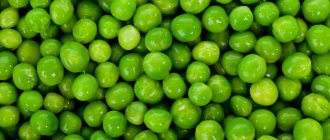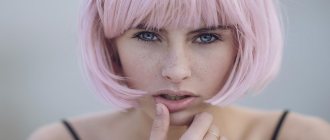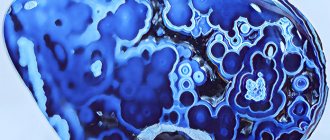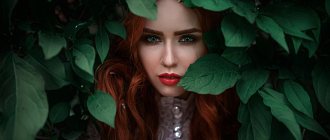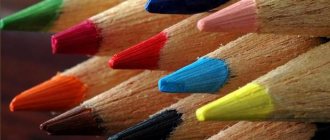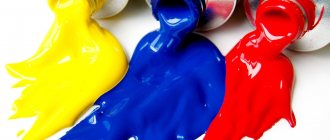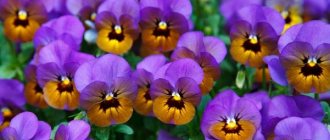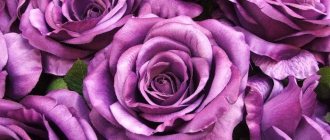Greetings, friends!
Orange color in psychology is considered as the warmest, energetic and positive of all shades. It has a pronounced motivating effect, thanks to which it can almost instantly lift a person out of depression and set him up for great achievements.
Designers know this, which is why the combination of orange and black is one of the most popular colors for sports shoes, clothing and accessories, as well as for racing motorcycles and sports cars. Today we will take a closer look at how this color affects the emotional state and what can be said about people who like it.
Orange color: history
A person's first encounter with the color orange is sunlight. From school, many are familiar with the rhyme of the “colored basics”: “Every Hunter Wants to Know Where the Pheasant Sits.” Orange has an independent position in the solar spectrum with a wavelength between 590–630 nm. This is the only color that does not have cold tones, because it lies between the warm shades of red and yellow. The orange part of the solar spectrum is especially clearly visible in the rays of the setting sun - having given the life-giving power of radiation to the earth, the luminary sinks below the horizon.
Distribution in nature
The orange pigment carotene is popular in nature. In the plant world this is:
fruits and root vegetables - orange, apricot, peach, pumpkin, carrot flowers - marigolds, marigolds, several dozen garden and indoor plants lush autumn foliage, devoid of green chlorophyll honey, amber
Orange color is no less common among animals - foxes and squirrels, tigers and domestic cats, butterflies and ladybugs, goldfish and corals.
Application by people
Orange lead, a natural mineral containing lead, was used by primitive people in cave paintings. In Ancient Egypt, orange paint was extracted from the poisonous minerals realgar and orpiment; the resulting pigment decorated the tombs of the pharaohs, medieval manuscripts, and icons.
In the East, the fiery solar color was obtained from saffron, turmeric, and henna. Impressionist artists learned to convey all shades of sunlight after the invention of a bright orange synthetic dye based on cadmium salts. Paintings by Claude Monet, Van Gogh, Cezanne, Edouard Manet emit powerful orange energy.
Psychologist Martin Bellander scanned about 120 thousand paintings written in the 13th–21st centuries and found that the predominant color of European painting was and remains orange. In the last two centuries it has only been slightly replaced by blue
Today, orange is used by interior designers and fashion designers, the bright color distinguishes the uniforms of road workers, climbers and cyclists, and is used in the trademarks of popular brands. Interestingly, prisoners in American prisons wear cheerful tangerine uniforms to make it more fun to sit in and harder to escape.
Name
The name “orange” appeared in Europe at the beginning of the 14th century, and in Russia in the 18th century. The French word orange (fruit) came from the Arabic language - naranj, in turn, the Arabs borrowed it from Sanskrit - naranga (orange tree). In the language of the ancient Indians - the Dravidians - it could mean “fragrant”.
Symbolism of color
Orange color is the discovery of the East, because the birthplace of the orange is China. In Asian religions this color is interpreted differently than in European culture.
1 In Chinese culture, the orange hue is the transformation of the vitality of the Sun and fire (red) into the fertility and richness of the Earth (yellow).
2 In Hinduism, the orange lotus is a symbol of the sexual chakra (Svadhishthana), which is responsible for a person’s sexual energy, his love of life, and reproductive ability.
3 The color saffron plays a decisive role in Buddhism. It symbolizes purity that has passed the test of fire. Orange is a sign of overcoming human vices. Buddhist monks wear clothes of this color as a sign of humility and renunciation of earthly goods. An orange stripe completes the ornament of the Buddhist banner - this is the highest degree of enlightenment and wisdom.
4 In the Christian tradition, orange is a sign of the spiritual energy of the seraphim - the angels closest to the Divine essence. The symbol of Christian wisdom - Sophia - is depicted in an orange vestment with fiery hands raised up, which marks the emotional and life-giving feminine principle. “Flame of love and mercy” (flamma amoris et caritatis) - this is how the color orange is defined in Latin.
Read also: Blue color in psychology
In European heraldry, however, this color symbolizes variability and betrayal. In Western culture, orange tones were typical for the clothing of jesters and frivolous people.
In the Middle Ages, orange became the family color for Orange-Nassau, one of the most influential houses in France. Its representative, Prince William I of Orange, was an ardent Protestant and led the fight against Catholic France. It ended with the formation of independent Holland. The orange color on the Orange flag became a symbol of Protestantism and the struggle for spiritual and political freedom.
Symbolism in Eastern culture
In different directions, the meaning of color was special. For example, in Buddhism, the color orange is a symbol of humility. It is believed that thanks to this tone it is much easier to give up all temptations, pacify vices and passionate aspirations. This is why monks wear rich orange robes.
Magicians and healers have long been convinced that gamma can strengthen the body and spirit, as well as heal. In addition, it was believed that under its influence the individual reveals his own potential.
Psychology of orange
Orange is the fruit of love between red and yellow flowers. From the fiery but aggressive energy of the red “father,” the orange child inherited activity and determination. The enlightening and cheerful dynamics of yellow affect the left half of the cerebral cortex. The “maternal” energy of yellow gives the orange creativity, optimism and friendliness.
The beneficial effects of orange on the human psyche and body have been noticed by healers since ancient times.
Strengthening self-esteem is the main quality of orange energy. This color has a beneficial effect on indecisive people suffering from an inferiority complex. The orange tone awakens sexuality, parental instinct, responsibility for one's offspring - this should be taken into account by everyone who wants to have a family and healthy children. Orange tones stimulate mental activity, liberate imagination, and awaken intuition. People of intellectual work need this color like air. A lack of orange energy results in pessimism, hostility to novelty, lack of self-confidence, fear of life, and ultimately depression. During periods of grief and loss, this color helps to overcome difficult conditions and find balance. Psychologists and color therapists actively use the color orange in the treatment of neuroses and depressive syndromes.
Characteristic
Orange belongs to the warm spectrum. This is an intermediate color created on the basis of red and yellow. It combines the advantages of both components, and the predominance of one of them determines not only its saturation, but also its combination with other tones, as well as the impact on a person’s psychological and even physical health.
But basically the palette is associated with change, activity and energy. It is often used as a warning. It’s not without reason that workers’ uniforms or special beacons in cars and bicycles contain details of this shade.
In any case, most of the population perceives it as heat, fire or communication.
Negative effects of the color orange
Everything is good in moderation - and orange is no exception. Experts consider it to have the best effect on humans. It gives the energy of creation, inner relaxation, and disposes to generosity and nobility. With an excess of orange energy, negative human characteristics come to the fore:
selfishness vanity arrogance promiscuity striving for superiority laziness envy spoiling
Excessive passion for orange tones can shake even a stable psyche - overexcitation sets in, irritability increases, aggression, and then apathy. Orange powerfully attracts attention to itself, so it should be used carefully and in small dosages.
Properties
The palette includes warm shades, which characterizes the positive psychotherapeutic effect. It is known as a symbol of positive thinking and helps get rid of apathy and melancholy.
Psychologist Daria Milai
Make an appointment
But you should be careful. Excess can lead to tension and irritation. Especially the neon variety has a tiring effect, so its use in any area should be limited.
Orange lovers
The hidden qualities and capabilities of a person can be “read” by his clothes and color preferences. People who love and know how to wear orange clothes are indestructible lovers of life, they know how to enjoy the joys of earthly existence, and are not prone to self-examination and self-flagellation. They are open to new acquaintances, but do not always value old connections.
Orange lovers are intellectuals and creative people, they are resourceful and do not burden themselves with unnecessary problems. The thirst for adventure does not allow them to sit idly by. Lovers of bright orange tones may discover pride, a desire to command and subjugate. Connoisseurs of pastel colors are distinguished by restraint.
Undoubtedly, orange people are non-standard, they hold the secret of eternal youth, but there are not so many of them among us.
What does dislike of tone mean?
If an individual avoids this palette in everything, then this indicates his phlegmatic nature. Such natures love order and are used to being in control of everything. Spontaneity and vanity are not their thing. Especially when external manifestations destroy plans made long ago, this greatly irritates them.
But there is another opinion that those who ignore orange suffer from an inferiority complex. A person is afraid to attract attention and stand out. And in his inner world a melancholic mood and pessimism prevail. Therefore, bright and saturated colors often irritate him and even cause disgust.
Shades of orange
Orange is the color of a mixture of red and yellow tones. Different proportions of colors give 116 shades in the international color identification system (Pantone Matching System). In the lightest colors, yellow, white, and pink predominate; at the other end of the palette, red and brown tones dominate.
Light
Shades with a predominance of light yellow or pink - peach, apricot and pastel orange - have associations with feminine tenderness and sensuality.
Peach - the combination of orange and pink appeals to romantic and dreamy people. This is the color of bliss, relaxing and peaceful. Apricot - close to the orange classic, is used in psychotherapy to raise vitality. Pastel orange is as soft as peach, but does not contain pink tones. It has an unobtrusive effect on the psyche, increasing a person’s performance.
Light shades of orange are popular among interior designers and fashion designers. They act gently, do not irritate, and at the same time increase people’s mood and energy.
Yellow-orange
Shades of orange with a predominance of yellow characterize such masculine qualities as restraint and decency. They are also used in road signs - without distracting attention, they create a serious mood.
On the light edge of the palette is the “color of marigolds,” and the rich color of “orange peel” completes the palette. These shades will suit people with reddish skin tones. Mustard color is used in their clothing by eccentric people who strive for originality and self-expression. Yellow-orange tones are suitable for decorating homes in a provincial style.
Read also: Yellow color in psychology
Red-orange
The predominance of red creates an active, but not aggressive red-orange palette. Lovers of such tones have an excess of sexual energy and are prone to adventure. Bright colors are used in the design of sports equipment and structures. The palette includes colors:
carrot red-orange tango (tangerine) - the color of a bright tangerine
Such shades are used in the wardrobe of individuals who are ready to be the center of attention. In winter this color warms, in summer it overstimulates. Red-orange tones are used in high-tech style when decorating residential premises.
Dark orange
The bright sunny orange color is muted here with brown shades - such combinations are popular in clothing. This is a palette of mature, decisive men in whom the spark of romanticism has not gone out.
the color of a harvested pumpkin is copper-brick - an ideal color for dyeing hair; a giraffe in love is a mixture of red and light brown. Suitable for creating a cozy atmosphere in living spaces amber - symbolizes the strength of the male spirit, its power over a woman
Due to its strong energy and radiance, the color orange is recognized internationally as a safety signal in disaster areas
What does it mean
Most people associate gamma with warmth, joy, and happiness. It seems to charge you with vitality and energy, lift your spirits and set you on a positive wave. The tangerine tone brings a sense of celebration into the everyday routine. And that's why so many people love him.
The palette is the personification of:
- creative aspirations;
- optimism;
- love for self-realization and self-expression;
- determination and inner freedom.
In psychology, the color orange means that a person is active, strives for change and is always moving forward.
Often the shade is used in art therapy. It can be used to treat depression and improve self-esteem. It promotes the right attitude to work, increases productivity and the desire for logical thinking, and also increases concentration.
Experts attribute it to mixed. The orange variety is a combination of red and yellow. And its impact depends on the predominance of one of these components.
If the option has more yellowness, then the tone is calmer and induces harmony and tranquility. This palette stimulates communication and rarely causes hostility.
A shift towards redness adds aggression. Gamma symbolizes strength and perseverance, the desire to go towards your goal and not go astray. But for those who have an unstable central nervous system, such a complex causes irritation and anxiety.
There is a lot to be said about those who prefer this shade:
- Most fans can be classified as creatives and artistic personalities.
- Those who like copper or reddish are sanguine.
- Cheerful individuals who are sociable and open also love it.
And meditation or spiritual practices under the influence of such a color are desirable for closed people or social phobes.
Orange color in clothes
The color orange came into fashion at the beginning of the 20th century - as a reaction to the exotic costumes of the Russian Ballet, which toured in Paris. The fashion for orange was briefly suppressed by Coco Chanel, but in the 30s, orange returned. The brownish-orange shade of tight tango dresses perfectly emphasized the temperament and passion of the new dance.
The next surge of interest in orange shades occurred in the 60s; since then, famous couturiers have not stopped experimenting with the color orange. In order to “harmonize” with sunny tones, taste and determination are needed.
Orange color suits the “Spring” and “Autumn” color types - owners of warm skin tones, red or black hair can afford to wear bright, provocative dresses, sweaters, and coats of this color. Color types “Summer”, “Winter” - pale-faced blondes and brunettes - create a spectacular image with the help of orange skirts, trousers, shoes, and accessories.
What kind of people like orange?
Psychologists say that people who prefer the color orange are spiritually and morally adults, self-sufficient individuals who clearly understand what they want from life. They are positive and optimistic, very hardworking and always ready to take on a new interesting project, even if they are already fully loaded with work.
Among the negative traits of lovers of orange shades, psychologists identify snobbery and egocentrism (however, these character traits are quite typical for successful people). In addition, they are not always energetic - sometimes they experience periods of laziness. However, after a short recharging, they return to duty again, ready for active action and productive work.
Interior use
In a residential building or apartment, the color orange should always be present - as a generator of energy and positivity. You just need to take into account a few features:
furniture and decor in this color immediately catch the eye - it’s good if these are just accents, and not an array of bright colors that constantly affects the psyche; in rooms with south-facing windows, the role of an energy generator is played by the sun - orange color will be superfluous here; bright colors visually reduce small rooms - it is better to use light shades of orange in them
The festive color of orange will be appropriate in the kitchen and dining room - it awakens the appetite and improves digestion. For a small kitchen you should choose pastel colors, while a large room will be made cozy by an orange-brown color scheme.
In the living room there is enough a bright accent in the form of a vase with flowers or a painting on the wall, a roll call of orange tones of furniture and curtains. Orange is appropriate in country and minimalist styles, but does not look at all in a classic living room.
In the bedroom and office, an orange addition can be a blanket, small pillows, trinkets on the wall or shelf. The main condition: if objects begin to irritate, they can be removed away from the eyes.
Impact at the physiological level
Orange is a stimulating variety. It perfectly speeds up metabolism, helps you stay alert and energetic, and also increases the number of heart muscle contractions. At the same time, it is not a provocateur of aggression and panic (unless red predominates in it).
Face-to-face consultation
What are the features and advantages of face-to-face consultation?
Find out more
Skype consultation
What are the features and benefits of Skype consultations?
Find out more
With a weakened immune system and various chronic ailments, the shade mobilizes the body and tries to fight the virus and infections. However, during an acute period of the disease, it is undesirable to meditate on it. It is best to resort to it during recovery.
For those who want to lose extra pounds, orange is contraindicated in the kitchen. It stimulates appetite. But in sportswear it is welcome, as it increases activity.
The palette has been scientifically proven to increase libido. Although this effect is not as pronounced as that of red, still, if you add such elements in the bedroom, you can refresh your sex life with your partner.
Combination with other colors
Perhaps, like no other color, orange requires skillful combination with other colors. And there are some patterns here.
Monochrome colors
It is believed that white, black, gray are universal colors that can be combined with all shades of other colors. But orange is “capricious” here too.
In combination with black, orange loses some of its positive energy - the color scheme is reminiscent of the color of predatory animals and looks with a bit of aggression. In the company of white, the orange color becomes joyful and carefree - this is a classic combination for a serene time of year, suitable for all light types, except for “Summer” itself. Orange, as a complement to gray, should be rich - dark brown and red shades. In the interior, this is a win-win option; it looks luxurious, fashionable, and cozy. In clothing, this combination can be used to create a formal style, showing taste and caution.
Complementary colors
Cool blue color contrasts with warm orange tones. This is one of the few combinations of orange color that is suitable for carriers of the “Winter” - “Summer” color types. Orange combined with blue looks bold and original. The combination of terracotta with steel shades of blue looks great in the interior. In clothes it is allowed to add lilac, violet, and crimson to orange.
Related colors
Beige and brown shades are related to orange color. They harmonize perfectly with it in the interior and balance contrasting combinations in clothing. Orange and brown is a cozy, pretty composition, both for a suit and for the interior.
Interesting Facts
There are 5 such facts:
- There is an official holiday in the world dedicated to the color orange - September 5th.
- The color creates a feeling of warmth. According to experts, if you look at the shades of this spectrum for several minutes, the ambient temperature will seem several degrees higher.
- Orange is considered the national color of Holland. Every year on April 29, the country celebrates Royal Night. People wear orange-colored clothes for the holiday.
- Shades of orange evoke pleasant emotions in people. Marketers have learned to use this feature effectively.
- Tibetan monks consider color sacred. They sew their clothes from orange fabric. For them it is a symbol of enlightenment and spiritual growth, humility and renunciation.
And such performers as Edita Piekha, the groups “Bravo” and “Chaif” sang about orange.
Orange color in advertising
The use of color in advertising is based on the principle of associations. Orange tones are a memory of a carefree childhood, a New Year's holiday, they are associated with joy, fun, and entertainment. At the same time, this color does not give the impression of reliability and stability. Orange color is used in advertising:
a variety of new entertainment products educational services children's products youth brands medical drugs sporting goods
The color orange is not suitable for advertising elite products and services - it is considered “frivolous”, frivolous. Reputable clients will quickly stop their eyes on advertising made in a blue, black or gold palette. These colors have symbolized the elite of society for centuries. Democratic brands: McDonald's, Lipton, Amazone, Hermes, Orange - widely use the festive and warm orange color in their logos.
* * *
Admirers of this sunny color have little chance of becoming depressed or disillusioned with life. Orange color is a cheerful mood, goodwill, sociability and activity. We have 116 orange shades at our disposal - a large selection to strengthen optimism and a positive attitude towards the world.
Physiological and psychological effects
Color enhances a person’s creative activity, increases the flow of oxygen to the brain, improves mood, increases blood pressure, and accelerates the pulse, so its use is indicated for asthenics and people prone to depression.
It has the energy of red and the sunny mood of yellow. Color encourages pleasure and causes spontaneous reactions and actions.
Has a beneficial effect on potency. Studies have shown that orange stimulates the appetite, but at the same time it is used in the treatment of excess weight , as it induces activity and movement.
It is useful for those who are sick, as it stimulates recovery and optimism. In communication, it creates a cheerful mood, promotes contact and friendliness.
For some people, orange causes arousal, but not as much as when exposed to red. Color is indispensable in the treatment of childhood apathy .
In psychotherapy, it is used to increase willpower, strengthen self-confidence, increase activity, and treat digestion and appetite problems.
Has a beneficial effect on sexuality.
It must be administered gradually, avoiding an overdose.

